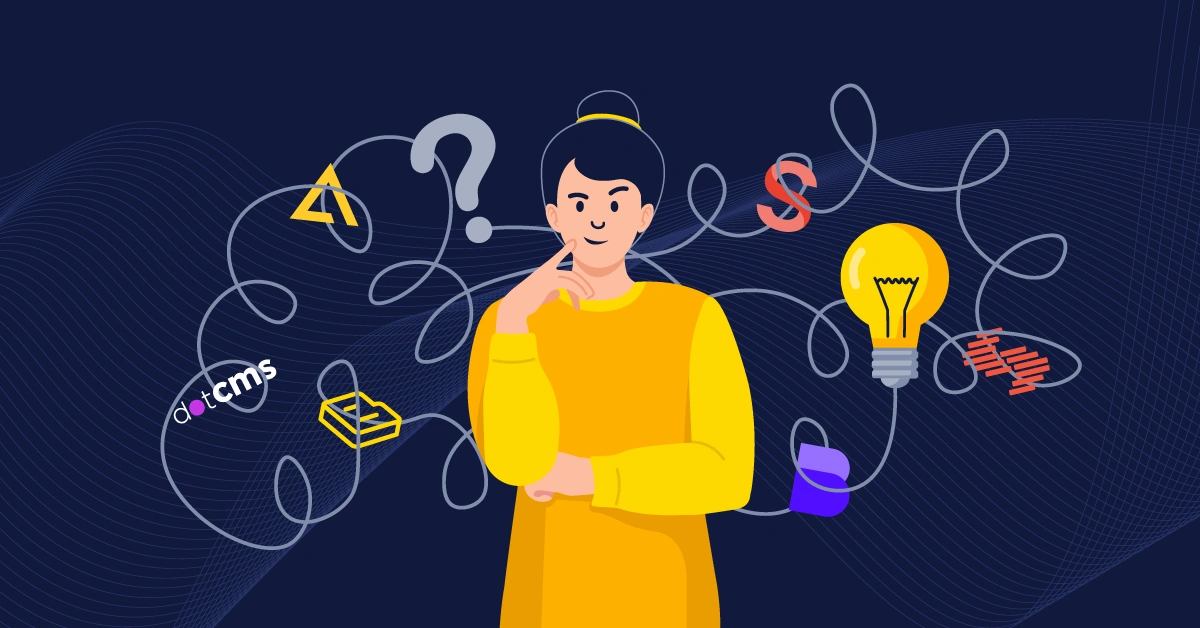
GSD
Compare the 15 Best Headless CMS Platforms of 2023
Posted by Osah Peter on December 5, 2023
Businesses must create a media presence to thrive in a technologically savvy world. Establishing a media presence can be achieved through content marketing, campaigns, and other marketing strategies. Content management systems (CMS) execute these tactics; however, most traditional systems aren’t customizable and lack the flexibility for implementation on a more comprehensive range of platforms (like mobile, desktop, Internet of Things (IoT), etc). Luckily, the advent of the headless CMS came to the rescue, offering unprecedented flexibility and functionality. This article explains what a headless CMS is and compares the best headless CMS systems available.
Table of contents
What is a headless CMS?
A headless CMS is a content management system that allows users to store and manage their content and then serve it through an application programming interface (API) that integrates into most platforms (mobile, web, desktop). In a headless CMS, the backend (content creation, management, and storage) and the frontend (consumer-displayed application) are decoupled, unlike its traditional counterpart, which combines both. The flexibility enables businesses to integrate content through an API into any application built with any framework or language.
How does a headless CMS differ from a traditional CMS?
Benefits of using a headless CMS
There is a wide range of benefits to using a headless CMS. They include:
-
Flexibility: With a headless CMS, there are no limitations on frontend system technology since you may use contemporary frameworks and enhance the functionality of your frontend applications by using the capabilities that are native to those frameworks.
-
Cloud storage: Since the contents of a headless CMS are primarily stored in the cloud, they are presumably from a single source of truth and are easily accessible to frontend platforms integrated with the headless CMS.
-
Ease of maintenance: Updating and managing content is easier with a headless CMS since changes must be made on the content layer. Furthermore, all frontend applications that interface with the headless CMS will immediately reflect changes.
-
Customizability: Because a headless CMS decouples the presentation layer frontend from the content layer, the presentation layer can be customized. You can quickly change it without compromising the content while designing custom platform frontends.
-
Security: A headless CMS is somewhat unique. Content is often distributed using a content distribution network (CDN) rather than a database when using a headless CMS. Because there is no database, there is less of a security risk. It’s also less susceptible to DDOS attacks because its content layer is decoupled from the presentation layer.
-
Enhance the speed of content creation: A headless CMS improves content creation speed by providing essential reusable content components (blocks) to create and update content quickly, offering flexibility of use.
-
Wider audience reach: A headless CMS reaches a larger audience because it distributes content more smoothly across several devices and platforms. This can be a tremendous competitive advantage because it makes it easier for businesses to interact with customers where they are and on their terms.
-
Scalable: A headless CMS is built to scale, allowing it to deal with increased traffic, content volume, and many user requests simultaneously. It can do that due to its solid caching techniques, content delivery networks (CDNs), and other performance optimization features.
How to choose the best CMS?
To choose the best headless CMS, consider the following factors:
-
Business needs: When considering the best headless CMS, we look out for headless content management systems that satisfy the fundamental requirements of most companies out of the box. For example, a business with different teams needs a CMS that meets certain requirements, as shown below:
-
Cost: Cost is a factor when considering the best headless CMS. Businesses would be interested in using a CMS that satisfies their business requirements without breaking the bank.
-
Product ratings: Product ratings are vital in selecting the best headless CMS. Ratings give a consumer's view of the headless CMS technology. We consider ratings from platforms like G2, the world's largest and most trusted software marketplace that provides peer reviews on software.
-
Security: An excellent headless CMS caters to security in its API architecture, prevents attacks like DDOS attacks, and has a user management and authorization system.
-
Internationalization (Ii8n) and localization: A good headless CMS should support internationalization (customizing content for different markets and regions) and localization (customizing content for a particular market or region)
-
Personalization: A proper headless CMS should support content customization in a way that suits a business's requirements out of the box.
-
Integration with third-party solutions: A CMS should provide integration with third-party solutions, as businesses that use the CMS may want such integration to add more functionality to their application.
-
Collaborative tools: Your CMS should provide a collaboration tool by default, which will help teams work effectively with each other on delivering content to their users and track the lifecycle of content to be delivered.
-
Content organization: A CMS must have effective content organization. To make sure your information is conveniently searchable and categorized, look for tools like categorization, tagging, and metadata management.
We have explained the requirements considered in choosing the best headless CMS. Next, we will outline 15 headless content management systems that satisfy these requirements.
The 15 Best Headless CMS Platforms
Based on our criteria and reviews, these are the best 15 headless CMS platforms.
1. ButterCMS
ButterCMS is a cloud-based headless CMS offering a simple platform for individuals, small to mid-sized businesses, and enterprises. Since its founding in 2016, ButterCMS has emerged as one of the top headless CMS systems, offering a variety of features that make it easy for users to manage content. It's user-friendly, making it ideal for both technical and non-technical users. ButterCMS has a 4.7-star rating on G2.
Highlights
-
An available write API that can update content like e-commerce product listings and marketplace data and create content like FAQ pages and knowledge bases
-
A globally cached API assures the highest performance, resilience, and scalability
-
An API explorer that displays the content response from Butter fetched from the content API and a working sample
-
A WYSIWYG Editor supercharged with features like powerpaste (transfer contents from external sources like Google docs/MS Word documents into ButterCMS) and document export
-
Supports integrations to third-party services like Cloudinary, Typeform, DeepL, Lokalize, Crowdin, Okta, Azure, and more
-
The integrated Butter migration tool lets you quickly move content and structure between sites and environments.
-
A digital asset management (DAM) tool with automatic image compression, in-app-image editing, and responsive image generation capabilities
-
The team presence feature alerts users when another team user views the same content in ButterCMS.
-
Control your company's content from one central location through its multi-site and multi-environment functionality.
-
Support for single sign-on (SSO) authentication.
-
Provides user management capabilities and custom roles.
-
It comes packed with a blog engine by default, making creating blogs easier without additional setup.
-
Supports internationalization and localization.
Drawbacks
-
Lacks built-in analytics capabilities.
-
Requires technical assistance to implement.
Pricing
-
Developer plan: free forever
-
Micro plan: $99/month
-
Startup plan: $199/month
-
Small business plan: $375/month
-
Enterprise plan: (Custom pricing) Contact here.
Who uses ButterCMS?
2. Contentful
Contentful is a cloud-based headless CMS founded in 2013 in Berlin, Germany, by Sascha Konietzke and Paolo Negri. Its headless architecture simplifies the organization and distribution of content across all platforms for developers, content editors, and content administrators.
Highlights
-
It possesses a high capacity to handle omnichannel content distribution, transforming it into a valuable tool for creating digital experiences.
-
Simple content editing and creation through its content models
-
Contentful integrates with various third-party applications, including analytics, marketing, and automation tools.
-
Contentful offers a customizable user interface for creating various content formats, including rich text and JSON samples.
-
Contentful supports real-time collaboration among content teams.
-
Contentful maintains a version history of the content entries, making versioning and rollbacks possible.
-
Contentful supports various media formats, including images, videos, and documents.
-
The analytics and monitoring tools integrated into Contentful allow you to monitor the effectiveness of content and user engagement.
Drawbacks
-
It's more user-friendly and geared towards developers rather than typical users and marketers.
-
Non-technical users may find the content-authoring user experience (UX) difficult.
-
There is no simple way to import large amounts of data into the CMS; you must develop your custom script via the API.
-
Contentful allows you a lot of structure and component organization flexibility. It can be detrimental to larger projects if not done correctly.
-
The steep learning curve in understanding its content models
Pricing
-
Free plan (for developers and marketers building individual projects)
-
Basic plan: $300/month
-
Premium plan: (Custom pricing)
Who uses Contentful?
3. Ghost
Ghost is a modern CMS for bloggers, journalists, and content creators. It was created in 2013 by John O’Nolan and Hannah Wolfe and is used as a solution for cumbersome and slow content management systems, offering contemporary features to publishing teams needing a quick, secure, and customizable platform for their content.
Highlights
-
Ghost CMS offers SEO optimization tools built in to assist bloggers in optimizing their content for search engines.
-
Packaged with a default frontend templating engine
-
Ghost includes an integration library allowing users to connect their site to various third-party services and applications.
-
Ghost uses a markdown editor, simplifying document production and formatting via basic markdown syntax rather than hypertext markup language (HTML).
-
Ghost supports membership and subscription-based content monetization natively.
-
Includes analytics that provide significant insights into website performance, audience interaction, and content data
-
Ghost CMS makes managing user roles and permissions simple if you have a blog with several authors.
-
Supports tagging and categorization
-
Offers customizable theming
Drawbacks
-
A steep learning curve for non-technical personnel
-
Ghost capabilities are limited to blogging, as it was made primarily to be a blog engine.
-
While Ghost CMS has a variety of themes and customization options, it is not as versatile as other CMS platforms.
-
Ghost CMS does not have as many third-party integrations, implying that you may need to create custom integrations to connect your blog to other tools or services.
-
Required technical assistance to implement some advanced features like self-hosting
Pricing
-
Starter plan: $9/month
-
Creator plan: $25/month
-
Team plan: $50/month
-
Business plan: $199/month
Who uses Ghost?
4. Hygraph
Hygraph, founded in 2015 by Michael Lukaszczyk and Daniel Winter, is a content management system that utilizes content federation to integrate data and services into content and distribute that content from anywhere to anywhere using a single GraphQL API.
Highlights
-
It provides content federation, as users can easily use the Hygraph content API to source external data.
-
Features a Hygraph Playground that developers can use to auto-generate GraphQL queries based on your content.
-
Provides instant preview of the content on Hygraph Playground from GraphQL queries
-
Features an asset editor that allows users to resize, blur, clip, crop, transform, and convert assets to fit different content components better.
-
Asset management, which allows users to upload, edit, and manage a wide range of supported digital media within Hygraph
-
Users can compare the content field's current content in Hygraph to earlier iterations and restore it through versioning if necessary.
-
User Attribution can track changes, view logs, or filter content depending on users and gain visibility into team members' actions.
-
Supports content modeling with built-in content types.
Drawbacks
-
It doesn't use Representational State Transfer (REST) architecture, which may limit its use, as many developers aren't conversant with GraphQL.
-
It requires more technical expertise to customize.
-
The layered navigation in Hygraph is difficult to use. Users complain that the saving logic and publishing feature could be more precise.
-
Localized content may take a while to load.
Pricing
-
Community plan - Free forever
-
Self-service plan
-
Professional - $399/month
-
Scale - $899/month
-
Who uses Hygraph?
5. Sanity
Sanity.io, founded by Even Westvang, Magnus Kongsli Hillestad, Oyvind Rostad, and Simen Svale Skogsrud in 2016, is a content management system that connects organizations to any third-party technology, data source, or frontend framework by using structured content to re-use material across any channel.
Highlights
-
Provides content as structured data
-
Provides Security Assertion Markup Language (SAML) and custom SSO options that can instantly offer users logging in via SSO project access and roles.
-
It supports content-driven, serverless webhooks that can be configured to fire off whenever content is added, changed, or removed.
-
It features Sanity Studio, an open-source single-page application for content management that users can easily set up and customize to their liking.
-
It is composable and customizable, as teams may quickly set up content workspaces in Sanity Studio and then adjust them as necessary.
-
Sanity supports visual editing and content source maps, which give editors a streamlined workflow so they may make content updates without knowing the specific location of the content within Sanity Studio.
Drawbacks
-
Requires more technical expertise for maintenance
-
It doesn’t support user management from the content management interface.
-
It provides its own query language, GROQ, which isn’t widely used and may pose difficulty to developers as they have to learn it from scratch to use it.
-
You cannot connect to any third-party APIs using it.
-
Inability to define detailed user permissions
Pricing
-
Free plan
-
Team plan: $99/month
-
Business plan: $949/month
-
Enterprise plan: (Custom pricing)
Who uses Sanity?
6. Strapi
Strapi is an open-source Node.js headless CMS that allows users to manage and write content using its content dashboard.
Highlights
-
A convenient feature included in the CMS is the Strapi Content Type Builder. It has a good user interface that makes it easy for developers to create API structures.
-
It supports integration with relational databases like PostgreSQL and NoSQL databases like MongoDB.
-
The content API can be available in either REST or GraphQL, depending on your needs.
-
Supports internationalization and localization by translating the content directly and customizing the messaging and page structure.
-
Supports third-party integrations with applications like Algolia, Ruby on Rails, Cloudinary, and many more
-
You may create and maintain the documentation for your content types with auto-generated documentation.
-
Supports self-hosting and cloud service options
-
Possesses built-in emailing as every created Strapi project is pre-installed with an SMTP server
-
Provides user permissions and custom role privileges
Drawbacks
-
Requires extensive technical expertise to manage and host
-
The content management interface is not responsive to mobile screen views.
-
Strapi's resource use is one of its drawbacks. You can use more resources than you need, making your website or application load more slowly.
Pricing
-
Self-hosted
-
Free plan
-
Flexible plan: (Custom pricing)
-
-
Strapi Cloud
-
Pro plan: $99/month
-
Team plan: $499/month
-
Custom plan (Custom pricing)
-
Who uses Strapi?
7. Prismic
Prismic.io is a headless CMS that prioritizes the experience and productivity of developers as well as content writers and marketers. It was created in 2013, and ever since then, it has improved its way of creating, distributing, and updating content by providing tools that ease content composition in a simple and intuitive way.
Highlights
-
Prismic supports access control to a repository through access tokens.
-
You can fetch fields from linked documents and use selective fetch (to fetch only particular fields) using the GraphQuery API option.
-
Localized versions of any content can be set up in Prismic, thanks to its capability for localization.
-
A dynamic "slice zone" in Prismic documents allows content authors to add, alter, and rearrange slices to create dynamic layouts for any page design, such as blog posts, landing pages, and tutorials.
-
Built-in image optimization through Prismic's built-in Imgix integration
-
The Integration Fields in Prismic allow you to easily and quickly integrate third-party services, as you can draw data into your repository from other content catalogs or custom APIs.
-
Supports importing and exporting Prismic documents from one repository to another
-
Prismic delivers analytics and insights into how users interact with their content, enabling them to make informed judgments about optimizing their content strategy.
Drawbacks
-
Requires technical expertise for customization options or additional features
-
It provides its own query language (GraphQuery) for fetching fields from documents, which might introduce a learning curve for developers trying to fetch content using its API.
-
Its content models are rigid and inflexible, as modifying existing content fields may require creating new models for the fields.
Pricing
-
Free plan
-
Starter plan: $7/month
-
Small plan: $15/month
-
Medium plan: $100/month
-
Platinum plan: $500/month
Who uses Prismic?
8. Storyblok
Storyblok is a headless CMS with a Visual Editor for enterprises. Founded by Dominik Angerer and Alexander Feiglstorfer in 2015, it’s used by developers and marketers to produce content experiences across any digital platform.
Highlights
-
It supports SEO optimization at the content level via its native SEO plugin.
-
With native field- and folder-level internationalization features, users can effortlessly localize their content.
-
Custom personalization options are broad, as they can be integrated with industry-standard personalization options like Ninetailed, Optimizely, or any other custom personalization solution.
-
Its visual editor displays a real-time representation of the content generated, allowing you to edit or create it as you scroll down the page.
-
Its Digital Asset Manager (DAM) provides a complex set of capabilities that allows you to track, edit, and use your assets effectively.
-
It introduced Discussions, a Google Docs-style commenting tool that enables smooth in-engine collaboration.
-
Offers extendibility by providing ready-made tools (like releases and shared components) that can bring a plethora of new functions to your system
-
It supports permission controls and user management.
Drawbacks
-
After making adjustments, there may be a short delay before the changes appear on the storefront.
-
Assets, like content entries, cannot be scheduled for release.
-
There is no mutate/write access to its GraphQL API.
-
Some users have noticed intermittent interface responsiveness issues, such as scrolling difficulty with the HTML editor at specific browser sizes.
Pricing
-
Entry plan: $90.75/month
-
Teams: $411/month
-
Enterprise: $2999/month
Who uses Storyblok?
9. Contentstack
Contentstack is a headless CMS solution that combines quick content delivery, a simple user interface, and an API-driven architecture. Created in 2018, it is an industry-standard CMS that helps users manage their content workflow efficiently.
Highlights
-
Contentstack's Live Preview feature allows developers to quickly evaluate content changes without publishing, facilitating quick checks and testing.
-
Presence of a Contentstack AI Assistant, which enriches the user's content production experience
-
The Contentstack Sync API allows users to sync or save their application data on Contentstack via so-called delta updates.
-
Contentstack offers integration with other third-party services through its webhook, which triggers actions based on events made by updating content.
-
Contentstack provides SDK libraries that fetch data from Contentstack and are available in various programming languages.
-
Support for multiple roles to improve management processes
Drawbacks
-
It lacks inherent commerce capabilities and needs clients to integrate with a third party to access commerce features.
-
Developers have limited control over deploying content, as Contentstack controls that.
-
Versioning can be difficult and perplexing when several people simultaneously work on a content flow on Contentstack and make different versions for numerous projects.
Pricing
-
Start plan: $995/month
-
Grow plan: $4500/month
-
Scale plan: (Custom pricing)
Who uses Contentstack?
10. Agility CMS
Agility is a headless CMS platform that provides businesses with individualized, scalable content management solutions. Made in 2002 as one of the oldest CMS solutions, it helps marketers develop and deliver appealing content across various platforms due to its API-first approach and adaptable architecture.
Highlights
-
SEO support through its sitemap management functionality
-
With the help of its content Sync API, it can maintain a cache or copy of content available to your application without making API calls to its servers.
-
Its content management API supports REST and GraphQL.
-
Supports multi-site deployment, which lets users manage all your websites from one instance
-
Creating content and teamwork are more manageable with a user-friendly admin interface that seamlessly integrates plugin management and visitor interaction tracking.
-
It comes packed with a content editor, which streamlines content production.
-
Its programmable modules and themes guarantee uniform brand display across all devices.
Drawbacks
-
It only offers a small number of customization choices for the built pages.
-
According to some users, the WYSIWYG content manager could be more intuitive, as they had to handle some issues by going directly into code.
-
AgilityCMS is a cloud-based CMS; therefore, users depend on the infrastructure and servers of the platform for hosting and maintenance, which can lead to issues with data ownership, accessibility, and potential restrictions on customization or system integration.
-
There is limited functionality for making edits in already existing layout pages.
Pricing
-
Starter plan: $1499/month
-
Pro plan: $2999/month
-
Enterprise plan: (Custom pricing)
Who uses Agility CMS?
11. Directus
Directus is an open-source headless CMS framework made in 2006 that connects your application to a SQL database using its REST API, or GraphQL. It’s useful for content management and can be used beyond content management as a backend as a service (BAAS).
Highlights
-
It features a Data Studio App, a no-code presentation layer for data, content, and assets for general organization and navigation.
-
Content management API with REST and GraphQL support
-
Offers a user-friendly, straightforward interface that helps create and manage multilingual content.
-
Directus supports webSockets, making incorporating real-time data updates into your frontend applications easy.
-
It offers full-fledged authentication, like built-in JWT authentication, 2FA, and programmable password policies, and it supports SSO via OAuth, OpenID, and LDAP.
-
It supports field-level permissions, IP allow lists, custom filter rules, custom validation, and adjustable public access.
-
The Directus Flows module offers event-driven data processing and task automation.
Drawbacks
-
Restricted to relational databases, limiting database choices.
-
Compared to conventional headless CMS platforms, it could require more configuration procedures (as the CMS is more technically inclined), which could take more time and money.
-
Technical know-how and an understanding of server environments, databases, and API configuration are necessary for setting up Directus CMS.
Pricing
-
Self-hosted
-
Community self-hosted plan: Free
-
Enterprise self-hosted plan: Flexible pricing
-
-
Directus Cloud
-
Professional cloud: $99/month
-
Enterprise cloud: $599/month
-
Who uses Directus?
12. DotCMS
DotCMS is an open-source hybrid headless content management system built in Java. Created in 2003, it combines visual content editing with API-first flexibility to support digital content creation, administration, and delivery. DotCMS has a 4.1-star rating on G2.
Highlights
-
A single dotCMS server can manage hundreds of sites through its multi-site management capabilities.
-
The Push Publishing function allows users to "push" dotCMS objects, such as content, file assets, folders, hosts, content types, and users, to another dotCMS server(s).
-
It provides vanity URLs that are like reference pathways to internal or external URLs, which are effective solutions to help with site maintenance and SEO.
-
With the help of Visitors, Personas, and Rules content types, you can tailor content for various people in dotCMS (personalization).
-
Users can integrate and manage data used to integrate with external websites, services, and apps using the Apps feature.
-
Provides the form builder that creates forms on pages (stored as content).
Drawbacks
-
Users may need significant server resources to run dotCMS, particularly for larger deployments or busy websites.
-
Compared to other CMS platforms, some users have considered the documentation and educational materials for dotCMS less thorough or accessible.
-
For non-technical users or those unfamiliar with the platform, dotCMS can be challenging.
Pricing
-
Open source plan: Free
-
Enterprise plan: (Custom pricing)
Who uses Dot CMS?
13. Bold
Created by Quintype in 2014, Bold is a hosted, headless CMS, a leading AI-powered digital experience platform. The CMS empowers publishers to produce, manage, and distribute content through its structured APIs.
Highlights
-
Uses its Page Builder to handle branding and layouts
-
With the built-in SEO tool tailored for essential online requirements, users can ensure high discoverability and a speedier page load time for content.
-
Quintype employs WRU.ai, an AI-powered prediction engine, to assist with content personalization.
-
It provides a dashboard for application monitoring of memory, CPU, and logs of your content infrastructure.
-
Supports third-party integrations with subscription platforms like Accesstype (a monetization tool for content publishers) and Piano (analytics and activation)
-
Supports SSO authentication that can be utilized independently and in conjunction with the present framework
-
The accounts use two-factor authentication to grant the editor secure access.
-
Hosting with DDoS protection, CDN, and caching that guarantees 99.5% uptime
-
Optimized for SEO, making provisions for sitemaps, schema, canonicals, AMP, and social tags
Drawbacks
-
Insufficient documentation on the features of the product
-
Technical expertise is needed to add some customization to the CMS.
-
Steep learning curve due to the complexity of creating and managing content in the application
Pricing
-
Basic plan (Headless CMS): $99/month
-
Headless CMS + Frontend (Custom pricing)
Who uses Bold CMS?
14. DatoCMS
Created by Lean Panda in 2015, DatoCMS is a headless CMS that enables marketers, editors, and developers to create, manage, and distribute content using its web-based CMS dashboard and content API.
Highlights
-
Provides a real-time updates API that listens for changes in content using a steady connection that transmits events as they occur.
-
The Images API uses Imgix's power for real-time image processing and CDN delivery.
-
DatoCMS supports several locales identified by short ISO locale codes.
-
DatoCMS users can access previously published versions of a record, find out who posted a record, compare past snapshots to the current version, and—if necessary—restore the information to an earlier state using record versioning.
-
Supports webhook integrations with third-party solutions like Snipcart, Shopify, and Algolia
-
Supports access-level and content-level permissions
-
You may upload, view, edit, and organize assets in your project's Media Area.
Drawbacks
-
DatoCMS lacks a complete JS SDK for the GraphQL API, out-of-the-box pagination support, and React hooks.
-
It lacks intuitive field primitives such as a multi-select dropdown, a better markdown editor, an out-of-the-box JSON tree editor, etc.
-
DatoCMS provides search features based on GraphQL filtering, but full-text search is relatively limited. It lacks aggregations and support for result scoring.
-
According to some G2 user reviews, DatoCMS is not user-friendly for marketers because it’s not a plug-and-play solution. As a result, you must rely on developers for most of your needs.
Pricing
-
Professional plan: €199/month
-
Enterprise plan: (Custom pricing)
Who uses Dato CMS?
15. Amplience
Amplience is a content management system designed for e-commerce businesses. It provides an API-first approach by optimizing product page content, media, and assets and managing marketing campaigns. It also introduces generative AI to its content management, which improves the productivity of content producers and marketers.
Highlights
-
Introduces Contenthub, a post-production DAM (asset management) that organizes all assets and media into an accessible library
-
Provides dynamic media, allowing users to create asset variants from a single asset
-
Amplience provides an easy-to-use content authoring interface for creating and managing digital material such as product descriptions, photos, videos, and more.
-
Amplience acts as a product information management (PIM) system, assisting users in organizing and maintaining product information in a centralized area.
-
It includes analytics and reporting capabilities for tracking content performance, user interaction, and conversion metrics.
-
It uses AI and machine learning for content recommendations, personalization, and automation.
Drawbacks
-
Amplience is a feature-rich platform that comes at a high price.
-
Amplience specializes in online and digital content management. It might not be ideal if you require sophisticated offline content management.
-
Unfit for projects that are not primarily focused on business-to-business or business-to-consumer interaction
Pricing
-
Developer trial edition: Free for 60 days
-
Starter Edition: Starting at $25000 annually
-
Enterprise edition: (Custom pricing)
Who uses Amplience?
Final thoughts
Due to their extensive feature sets, headless CMS platforms are becoming increasingly common in web development. A well-rounded headless CMS, like ButterCMS, should always be the go-to choice if you want to build a strong, cutting-edge website or application that serves content to users. ButterCMS provides a platform with many features and tools for individuals, small to mid-sized businesses, and enterprises.
If you want your product or marketing team to test Butter CMS, we can set up a live demo to walk your team through the fast, easy-to-use interface.
ButterCMS is the #1 rated Headless CMS
Related articles
Don’t miss a single post
Get our latest articles, stay updated!
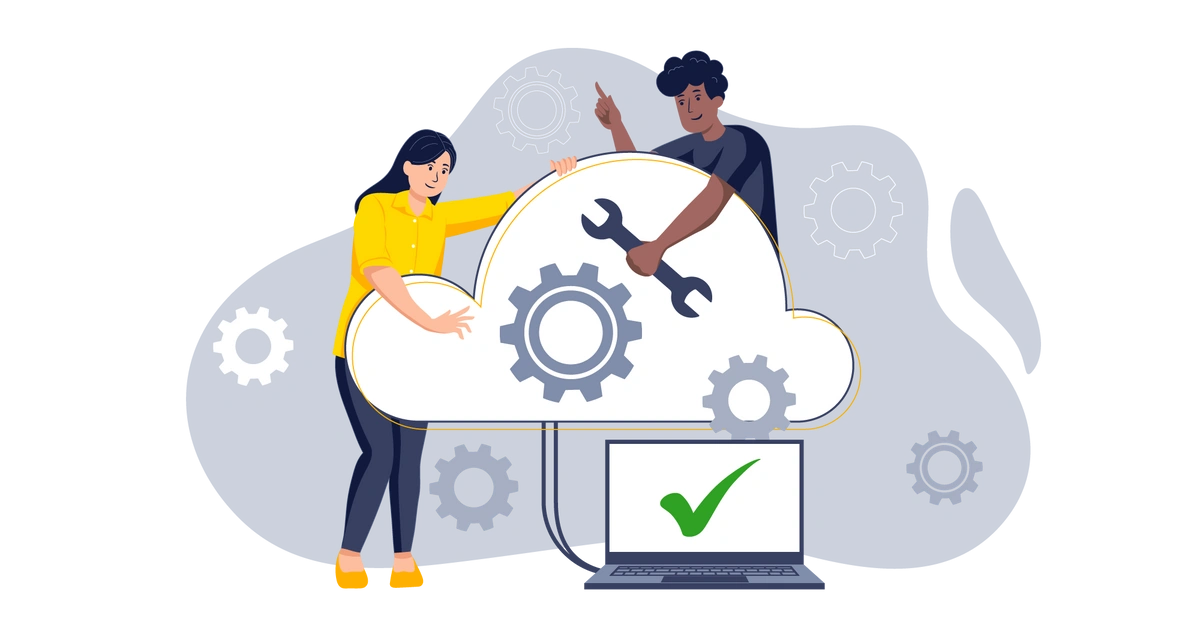
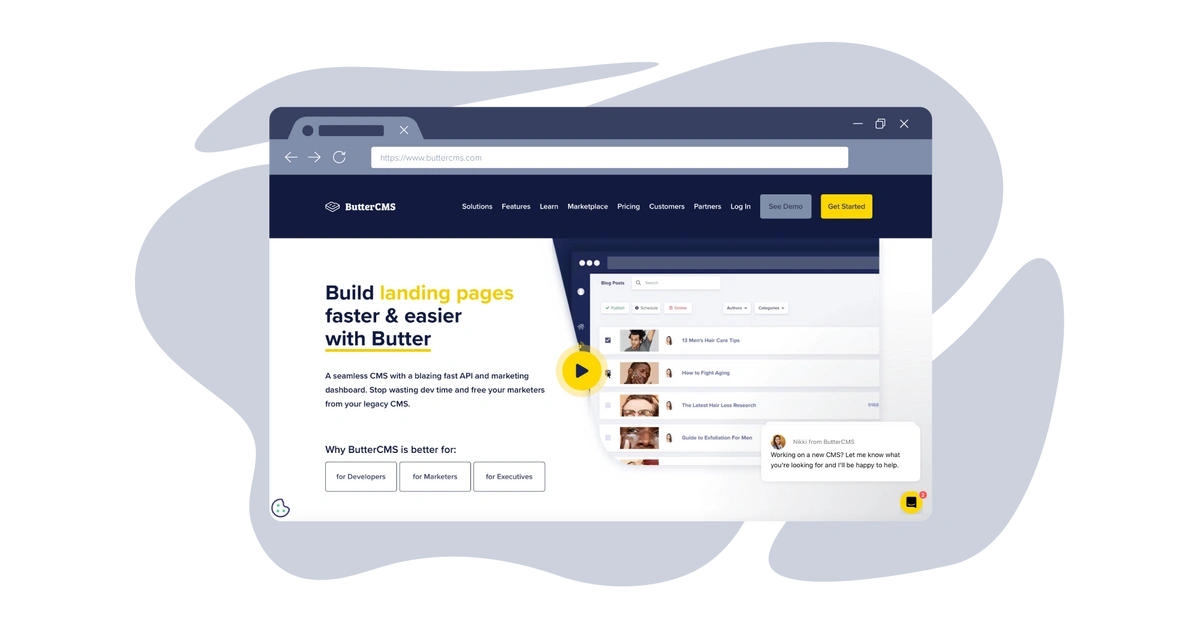
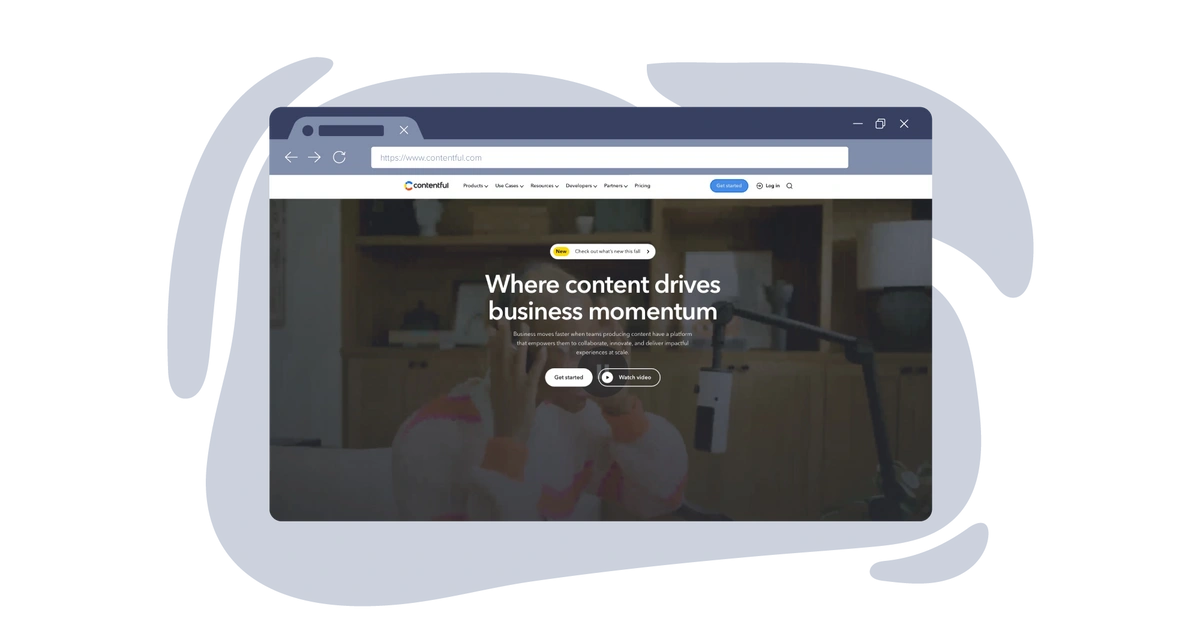
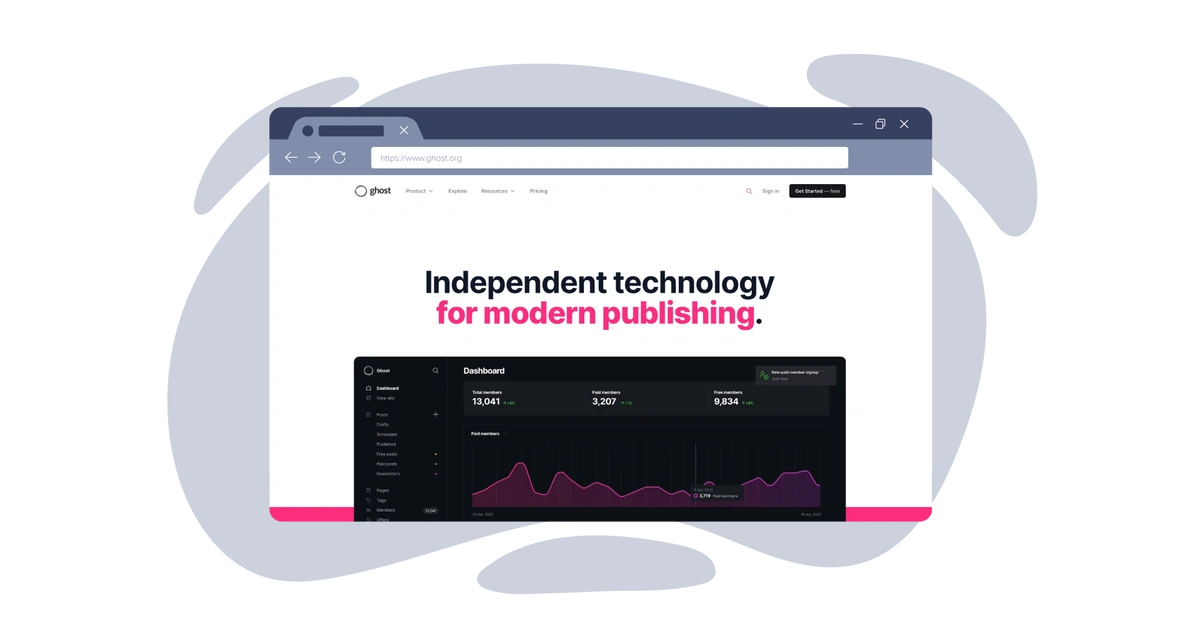
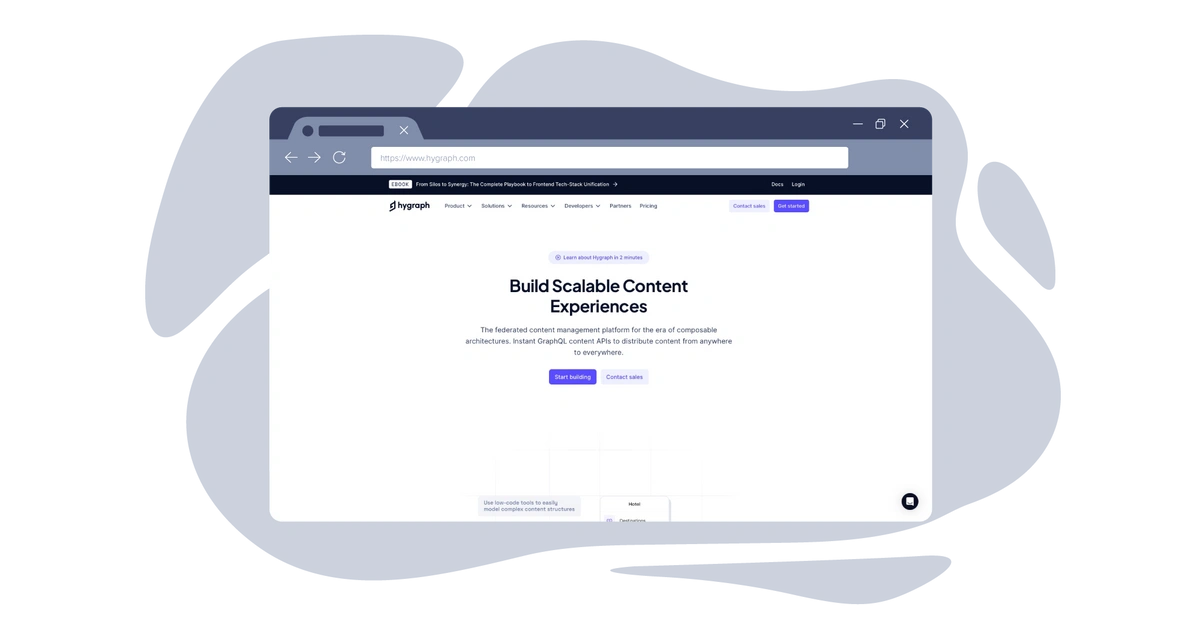
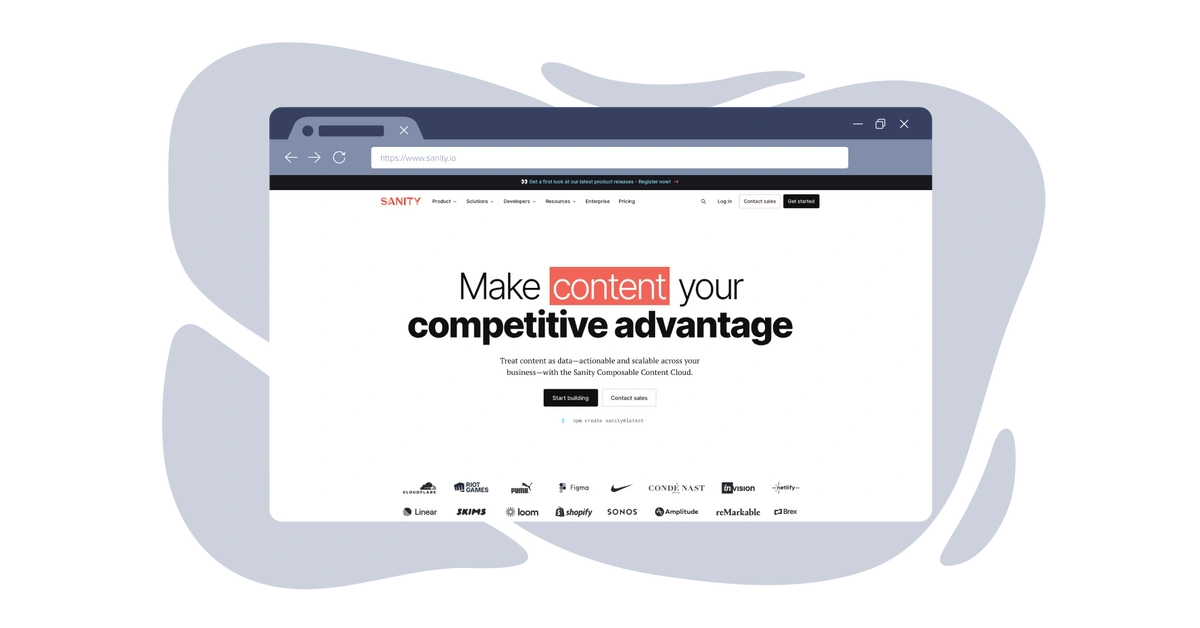
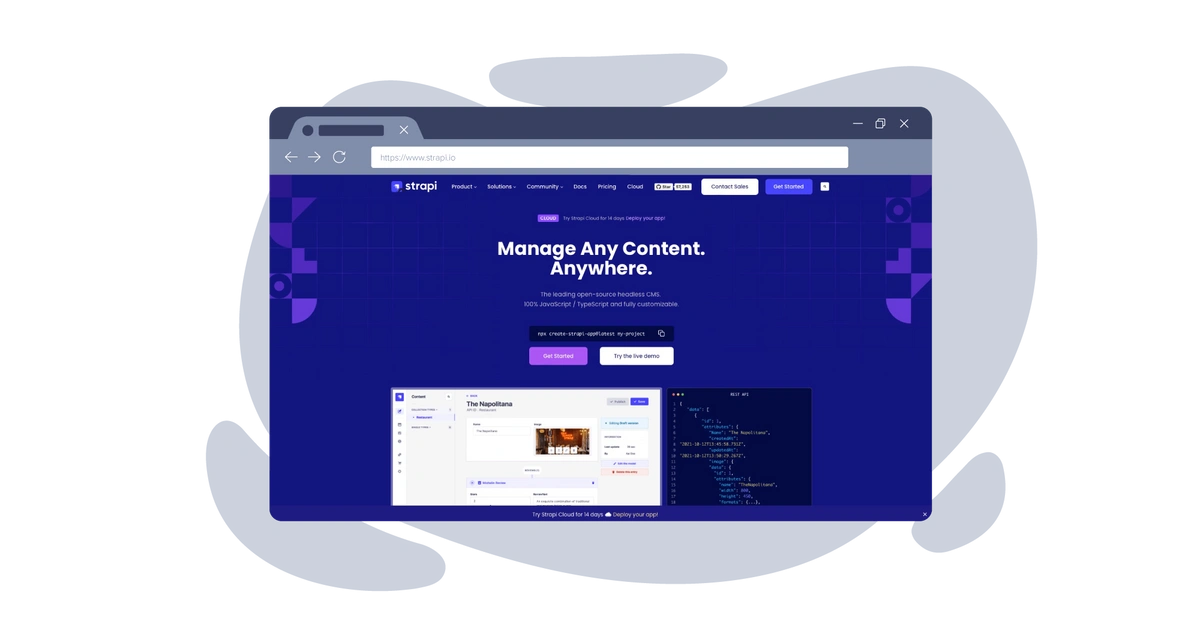
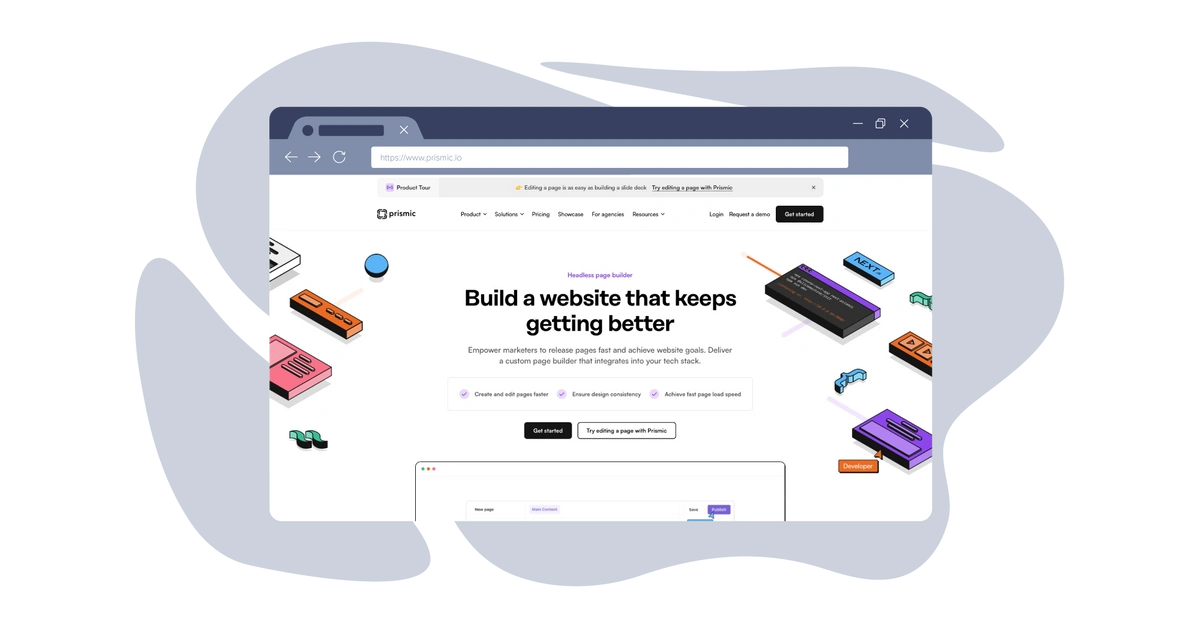
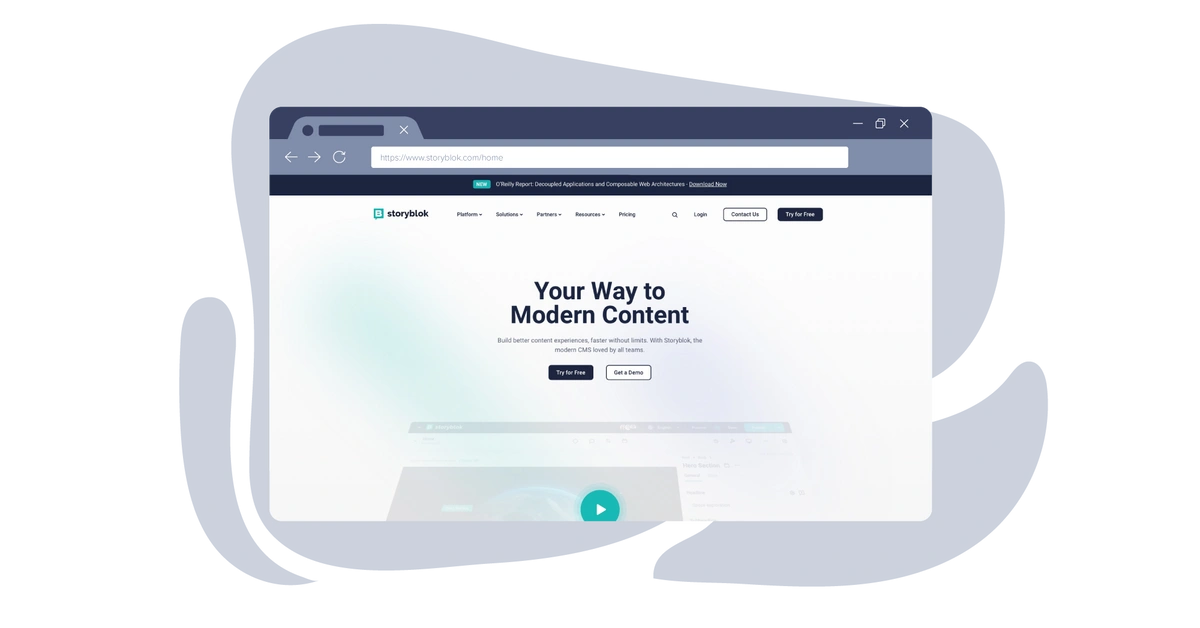
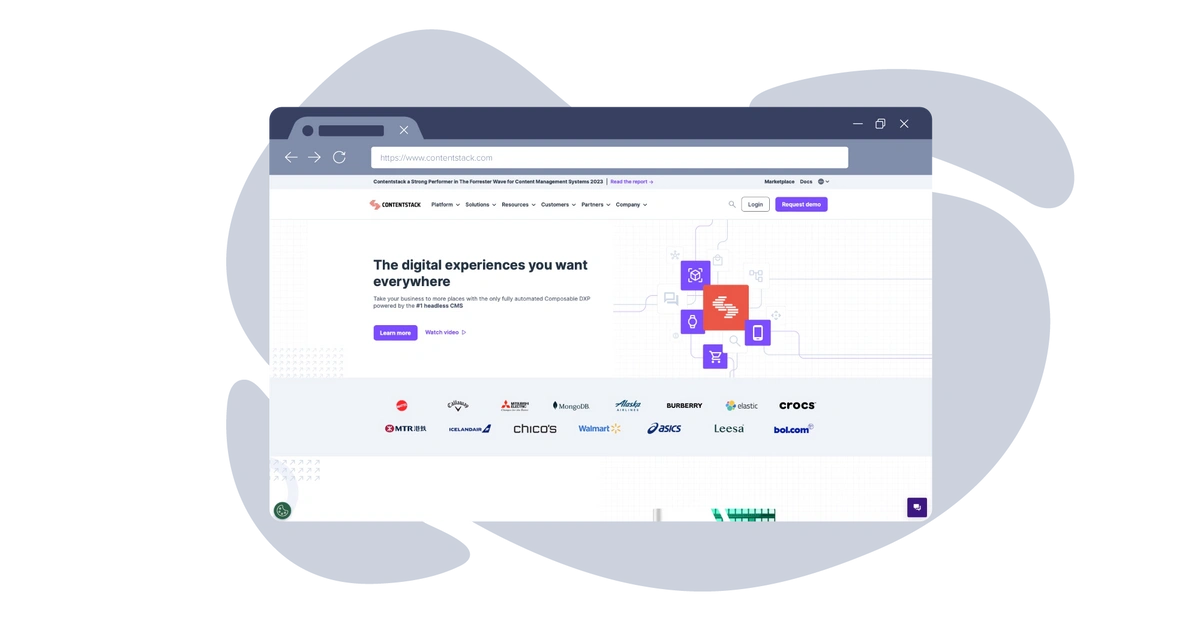
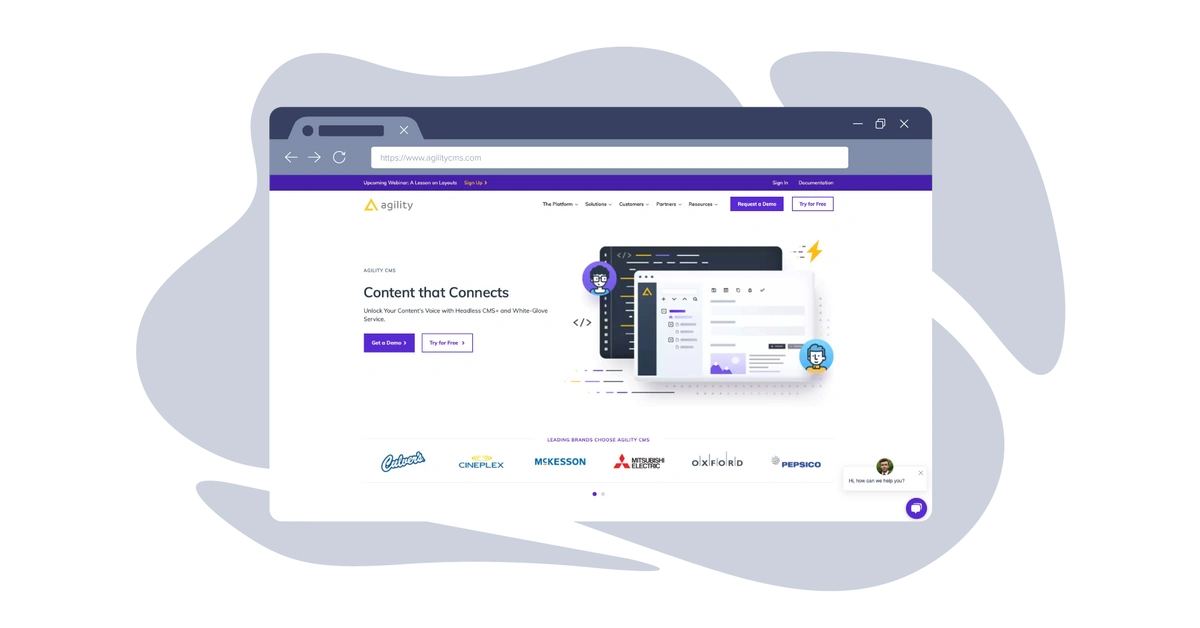
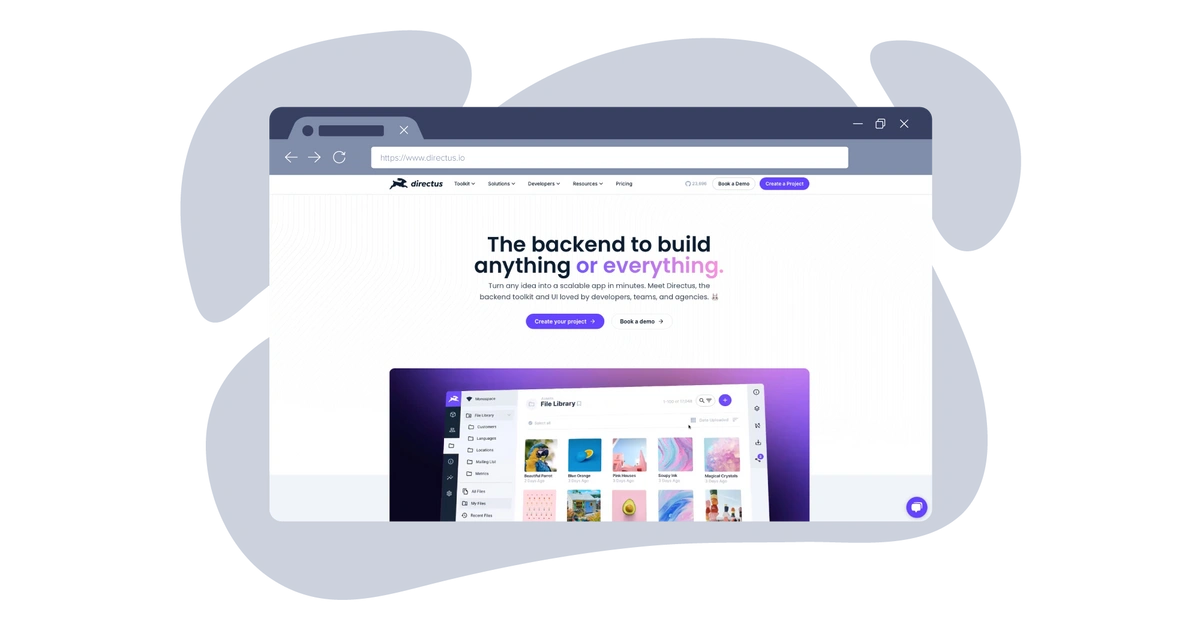
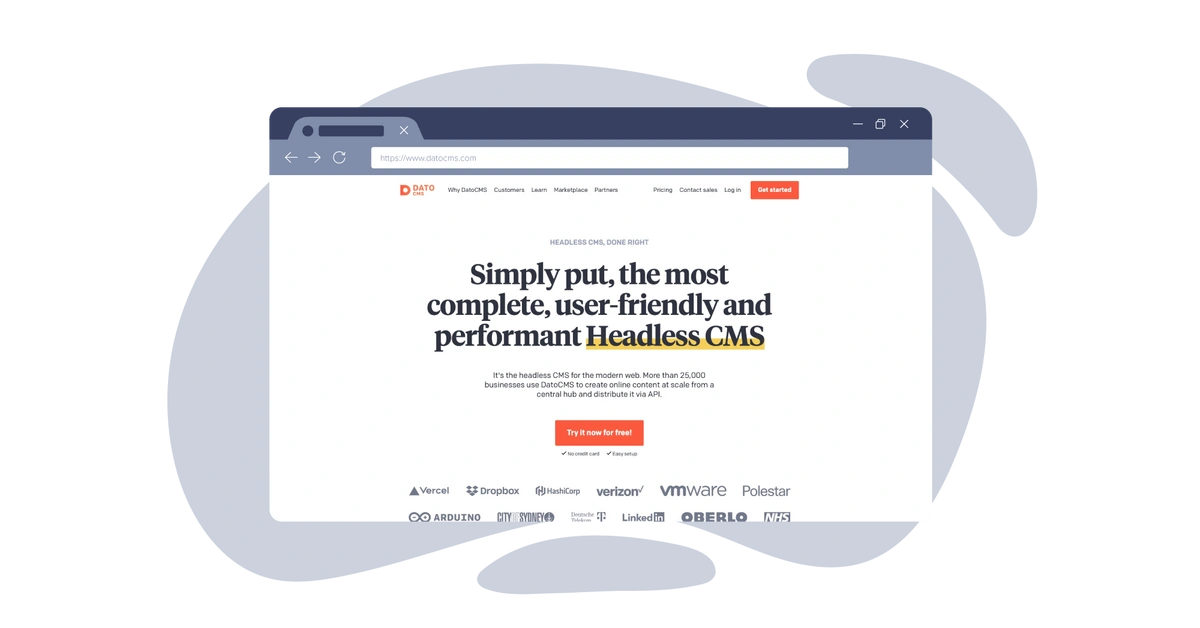
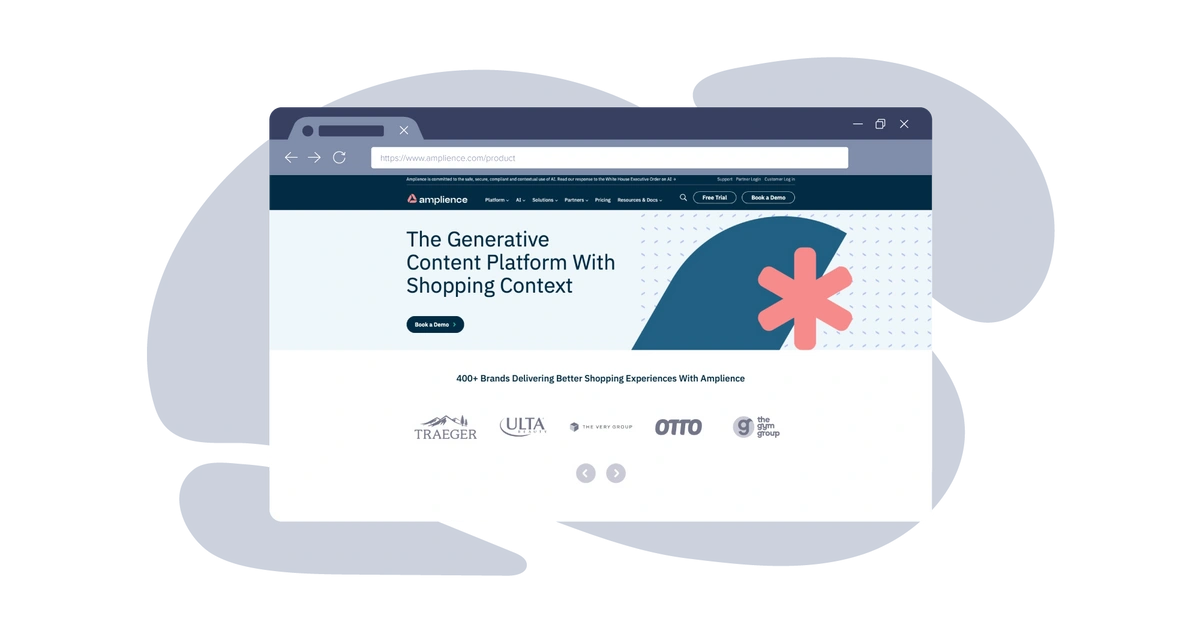













Osah Peter is a Software Engineer who is fascinated by web technologies. He is passionate about learning and acquiring knowledge and is keen on developing ways to pass knowledge to others in a simple manner.